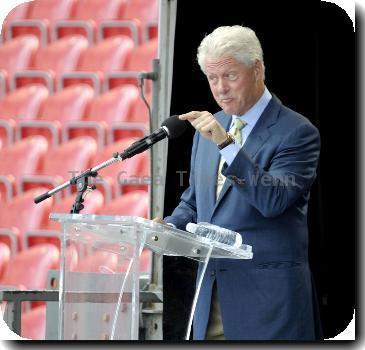Federal suit seeks to shut down cattle grazing along 150-mile stretch of upper Missouri River
By Matthew Brown, APWednesday, November 25, 2009
Suit seeks to stop grazing along upper Missouri
BILLINGS, Mont. — A push to end grazing along a 150-mile stretch of the Missouri River would bar about 10,000 cattle from federal lands in central Montana so that the river valley can be restored to more natural conditions.
An Idaho-based environmental group and two Fort Benton canoe outfitters filed a federal lawsuit Friday seeking to revoke grazing permits in the Upper Missouri River Breaks National Monument and force an environmental review by the federal Bureau of Land Management.
The 586-square-mile monument was created in 2001 by then-President Bill Clinton, along a route explored by Lewis and Clark in the early 1800s. The arid landscape has remained largely undeveloped — it’s been called an “American Serengeti” — and cattle graze right up to the river’s edge under BLM permits.
But the lawsuit filed in Missoula claims the cattle are marring the monument’s recreational opportunities and stunting the growth of cottonwood trees along the river.
“The cattle have had their heyday for 70 years,” said Glenn Monahan, co-owner of Upper Missouri River Guides and one of the plaintiffs. “Times have changed, and the higher use for this country now is recreation.”
Despite research highlighting the harsh ecological toll of grazing, ranchers who run cattle in the monument say they’re using the land responsibly.
Joe DeMars, who runs cattle along about eight miles of the Missouri River, said he rotates his herd between pastures to reduce their impact. He said he also uses water tanks set back from the Missouri so the animals spend less time at the river.
The BLM issues grazing permits on 113 allotments within the monument to 93 cattle producers.
Ranchers warn the lawsuit could drive them out of business.
“I know they want to get back to having an old-time Serengeti, but people still have to live. This is the only way of life that we know,” said DeMars, who lives the largely agricultural community of Winifred just south of the monument.
Monument manager Gary Slagel said the agency has been working for years to reverse the effects of decades of grazing. Among those attempts are fencing off some areas and limiting access to others during the hottest times of the year.
Slagel added that some problems were outside his agency’s control, such as upriver dams that decrease spring runoffs. Historically, those seasonal floods would carry nutrient-bearing sediments to areas where new cottonwoods could take root.
The suit assigned to Judge Donald Molloy is the third federal case against the BLM since a new management plan for the monument was approved in January.
The first two — challenging the number of backcountry airstrips and roads in the monument — have been consolidated into a single case before U.S. District Judge Sam Haddon in Great Falls. It is not likely to be heard until next summer.

